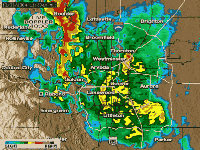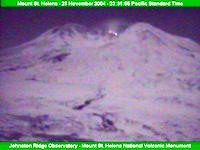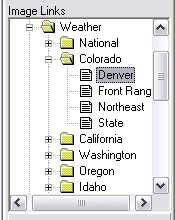|
|
|
|
|
How WIT Work |
|
Overview. The World Wide Web is
filled with constantly changing
pictures and images. For example,
you can find weather maps, weather
radars, road cams, mountain cams,
city cams and even scientific images
showing things like the solar
corona. WIT allows you
to capture, save, display, animate
and manipulate these images. Below
you find a detailed description of
WIT and all it
features. |
|
|
|
 |
|
1. Main
Screen. |
| The
image above shows the Main Window
for WIT. The picture is from a web
cam overlooking the city of Banff in
Canada. On the left, are the Tool
Pages that allow you to acquire and
manipulate images. You can also see
various Tool Bars and Status Bars. |
|
|
2. Auto Load |
|
If you
wanted to track images with your
browser, you would have to remember
to hit the "refresh" button every
few minutes WIT
automatically downloads a new image
at regular intervals constantly
keeping the image up to date. Time
intervals are adjustable from one
second to 30 days. |
 |
|
|
3. Magnified
Images. |
|
Because
the web-images are often small, it
can be hard to make details.
WIT allows you to expand the
images so they are easier to see and
read. This makes it easy to see the
details that would be invisible when
viewed on a web page. For example,
some weather-radar maps can be
magnified so you can track
individuals storms down to the
street level. |
 |
 |
|
|
4. Animations
|
|
WIT
automatically saves every image so
you can track changes over time and
even animate to produce movies of
the changes. This allows you to do
things like track thunderstorms,
view road conditions in real time
and even watch the eruptions of
volcanoes. |
Playback. Animations can be
played back at any speed and can be
continuously looped.
Tools. WIT has special tools
that allows you to select and view
each frame in the animations.
Individuals frames can be exported
and deleted. frames
Time Stamps. Each frame in the
animation is time-stamped, so you
can precisely measure when event
occur and how long they last.
Files. Animations can be saved
as frame files, GIF animations or
AVI Movie files. |
 |
 |
|
|
5. Tools |
|
Averaging. Many images from the
internet have a lot of noise in
them. This is especially true of
night-images. This is because as the
light level goes down, the gain on a
typical camera goes up. The image to
the right show an night image of
Mount Saint Helens. You can see a
bright spot from red-hot lava, but
there is so much noise that the rest
of scene is impossible to see. |
 |
|
WIT
solves this problem by averaging all
the frames that it has received.
Since the noise in pictures is
random, averaging removes the noise
and produces a clear image. The
image to right shows the effect of
average a few dozen night images of
St. Helens. This tool is also useful
for tracking |
 |
|
|
6. Links |
|
Organizing Your Links. There are
thousands of interesting images on
the Internet. To help you keep track
of images, WIT allows you to save
and organize your favorite links in
the same way as Internet Explorer.
Link can be saved as files so you
can share your favorite links with
friends.
Hundreds Of Links. WIT comes
with hundreds of interesting and
useful links. For example, there are
hundreds of weather-radar links for
every state in the US. There are
also links to active volcanoes,
geysers in Yellowstone Park and
mountain peaks around the world. |
 |
|
|
7. Macros |
|
Some web
sites have links that change over
time. For example, some images will
have the hour or date as a part of
the filename. For this reason, WIT
allows you to put special macro
codes into any link. The macros
change the filename or path for the
link over time. This allows you to
track changing images.
To make
it easy to enter and setup macros,
WIT has a special Macro Editor. The
Editor takes the guess work out of
creating and testing macros. The
image to the right shows the Macro
Editor. |
 |
|
|
|
|
|